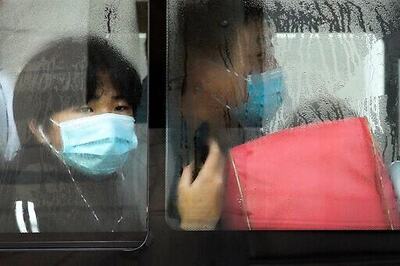
views
Kathmandu: Nepalese security forces opened fire Saturday as tens of thousands of protesters marched toward the king's palace to demand the end of royal rule, injuring at least four people. Dozens more were hurt by police wielding bamboo batons.
Three people were reportedly killed in the shootout.
The clash came one day after King Gyanendra tried to defuse the Himalayan nation's political crisis by offering a return to multiparty democracy. His move, though, did not appease many of his opponents.
In the Kathmandu neighborhood of Thapathali, soldiers and police fired rubber bullets and live ammunition as a massive wave of protesters tried to head toward the palace, the symbolic heart of the city and the goal of tens of thousands of pro-democracy protesters who had defied a daylong curfew to fill the city streets.
Soldiers in armored vehicles and long lines of riot police had blocked key intersections heading toward the palace and the city center, occasionally turning back crowds with tear gas and baton charges. An army helicopter hovered overhead.
A wave of protesters came within a few hundred yards (meters) of the palace before being turned back by security forces firing tear gas.
''Down with Gyanendra! Gyanendra out, out!'' many chanted as they moved toward the palace.
''Security forces opened fire on the crowd without warning, wounding many of us,'' said Ganesh Shrestha, who was slightly injured when a bullet grazed his arm.
At the nearby Norvic Hospital, the hallways were jammed with injured people calling for care. Doctors there confirmed at least four people had been injured by rubber bullets or live ammunition, and 43 were hurt in baton charges or who fell while running away.
Authorities later cut mobile phone services in Katmandu, a telecommunications official said on condition of anonymity, because of the sensitivity of the situation.
Protest organisers have repeatedly used mobile phones and text messages to rally demonstrators during more than two weeks of protests.
The marches came as Nepal's opposition alliance rejected Gyanendra's offer to name a prime minister for a new government.
''We will not accept ... We will continue the protests,'' Madhav Kumar Nepal, general secretary of the Communist Party of Nepal, one of the seven parties that is part of the alliance, told a cheering crowd in Katmandu.
"We are here to support you! Don't get weak in the knees! Don't ditch the people!" shouted the crowd.
In a joint statement, the alliance later called the king's political plan "meaningless and inappropriate," urging the public to intensify the pressure for democracy and asking security forces to join with the protesters.
Alliance leaders say the king's offer fell short of a key opposition demand - the return of Parliament and election of a special assembly to write a constitution.
Most opposition leaders want a constitution that would make the king a ceremonial figure or eliminate the monarchy entirely.
PAGE_BREAK
But they saw other problems too: Under the new plan, the king would retain an undefined political role in a constitutional monarchy and apparently keep control of the military.
After more than two weeks of bloody protests and a general strike that has caused a shortage of essential supplies in the capital, the king on Friday announced he was returning executive power to the people, and called on the seven main opposition political parties to quickly name a prime minister.
European ambassadors urged opposition leaders to consider the offer.
"The parties don't think he (the king) has done enough, but we think it is a basis on which we can build and move forward,'' British Ambassador Keith George Bloomfield said after meeting with the leaders.
The government imposed an eight-hour curfew in the capital Katmandu and the suburb of Lalitpur.
About 50,000 protesters in the resort town of Pokhara, about 200 kilometers (125 miles) west of Katmandu, gathered to demand that opposition parties not accept the king's offer.
The king's decision to hand over power was applauded by the United States and many other nations.
In Washington, US Secretary of State Condoleezza Rice told reporters the United States welcomed Gyanendra's proposal to "now turn to the political parties to form a government, to select a prime minister, to hold elections. That's extremely important."
Gyanendra is deeply unpopular, isolated in a collection of palaces, and has lost control of much of the countryside to Maoists seeking to create a communist Nepal in an insurgency that has killed nearly 13,000 people over the last decade.
The crisis began when the king seized power in February 2005, saying he had to crush the Maoist insurgency that had made holding elections impossible.
Nepal's crisis has escalated since a general strike called by the parties and the Maoists began two weeks ago. Protesters have filled the streets daily, leaving the country paralyzed, stores emptied of goods and the situation dangerously volatile.
Security forces firing at protesters have killed at least 14, and wounded many more.



















Comments
0 comment